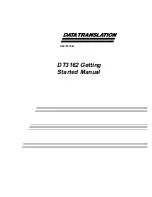
1.4 Trigger
U5303A User's Manual
13
Edge trigger slope
The trigger slope defines which one of the two possible transitions will be used to initiate the trigger
when it passes through the specified trigger level. Positive slope indicates that the signal is
transitioning from a lower voltage to a higher voltage. Negative slope indicates the signal is
transitioning from a higher voltage to a lower voltage.
Trigger precision and resolution
With -SR1 option, the U5303A trigger time interpolator offers a resolution of 7.75 ps (nominal) and a
precision of 20.7 ps RMS (nominal) .
With -SR2/-SR3 options, the trigger resolution is 6.25 ps (nominal) and the precision 15 ps RMS
(nominal) .
The accuracy of absolute trigger time is guaranteed (as specified in the datasheet) down to sample
rates 1/16 of the highest sample rate (1/32 of the highest sample rate with interleaving).
If comparing the initial trigger time T0 measured using the same waveform either used as channel
input trigger or as an external trigger, the T0 position can be slightly different (especially if the
waveform used as trigger has a slow edge).
First, the analog bandwidth can be different for the channel trigger input and the external trigger
input, resulting in a different slope and so a different T0.
Secondly, compared with the channel trigger, the external trigger threshold is not calibrated. The
input channel trigger calibration allows a T0 adjustment both in threshold and in timing, resulting in a
more accurate T0. However, when using the external trigger, the measured T0 is still precise and
theT0 position difference stays stable.
Using a signal with faster edge as external trigger can reduce this effect.
Trigger delays
For more details about triggers modes, post/pre-trigger delays and time-stamps, see














































